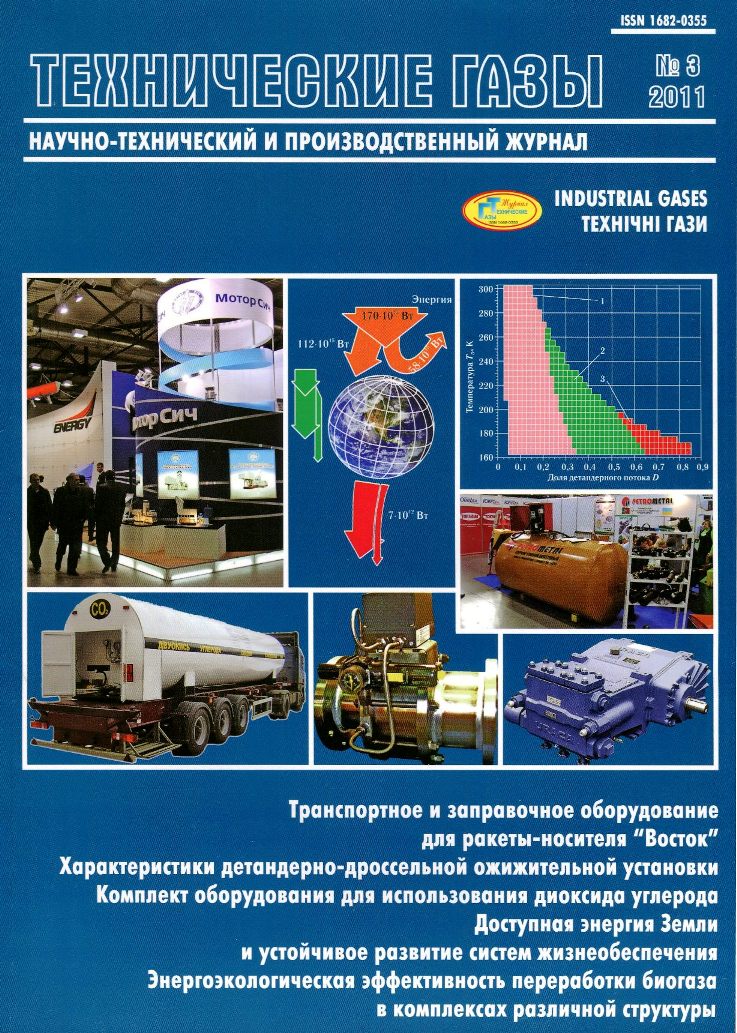ESTIMATION OF AN ENERGY ECOLOGICAL EFFICIENCY BIOGAS REPROCESSING IN THE COMPLEXES OF A DIFFERENT STRUCTURE
DOI:
https://doi.org/10.18198/j.ind.gases.2011.0557Keywords:
Biogas, Solid domestic wastes, Greenhouse effect, Emission, Utilization, Cogeneration unit, Boiler unit, Carbon dioxide plant, Absorption, Desorption, Motor fuel, Compressed natural gas (CNG), Liquefied natural gas (LNG), Low-temperature liquid carbonAbstract
The polygons of solid domestic wastes (SDW), which are biologically renewable raw material, can be regarded as a source of biogas. Just in Ukraine annually produce more than 12 million tons of SDW. As a result of anaerobic fermentation of each tone of domestic wastes can allocate annually biogas of 120...200 m3, and all polygons — methane of 800 thousand tons. Existing polygons SDW deteriorating environmental situation in Ukraine. Methane as main component of biogas has 21 times more greenhouse effect than carbon dioxide. The quantity of methane entering annually in the atmosphere from polygons SDW, equivalent to 16 million tons of CO2. The several variants of biogas utilization, which in the 6-16 times will reduce emission CO2 into the environment while producing low-temperature liquid carbon dioxide, CNG, LNG, electricity and heat energy in depending on the complex structure are considered. The consumption of a complex of 4000 nm3/h of biogas containing 56 % methane and 40 % CO2, alone can produce 550 kg/h of LNG and 318 kg/h of CNG. In addition, the emission of greenhouse gases will be reduced by 88 % or more than 8 times and will be 36,3 thousand tons CO2/year instead of 300,6 thousand tons CO2/year for a single choice polygon.Downloads
Issue
Section
INDUSTRIAL GASES IN MODERN TECHNOLOGIES
License
LICENSE AGREEMENT
After receiving an article for publication as required revision scientometric databases each author directs the license agreement on the assignment and transfer of the management of copyright. Signatures of the author (s) it is desirable to seal the personnel department of the institution where the author works (authors), or the seal of the Faculty.
Revision refers to the authors one layout for proofreading. Permissible only those fixes that result in compliance with the layout of the original text of the article. Significant changes are not permitted. Layout should be sent to the editorial office within days of receipt.

